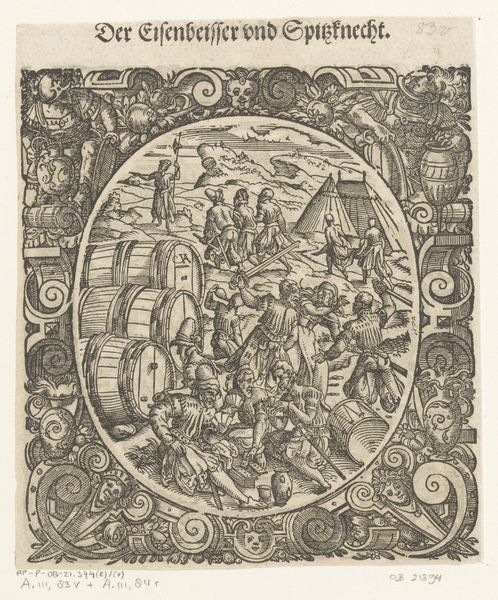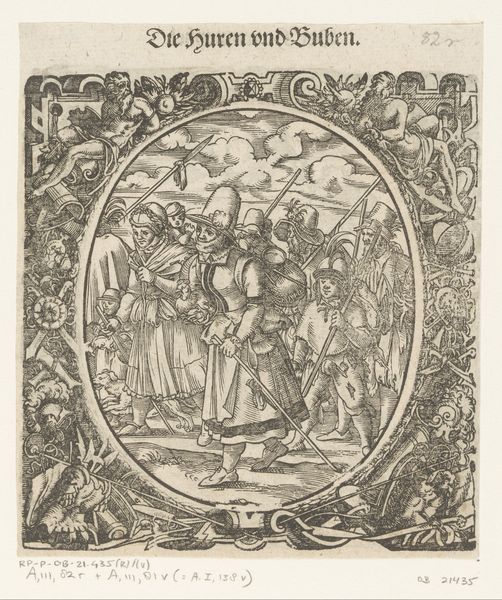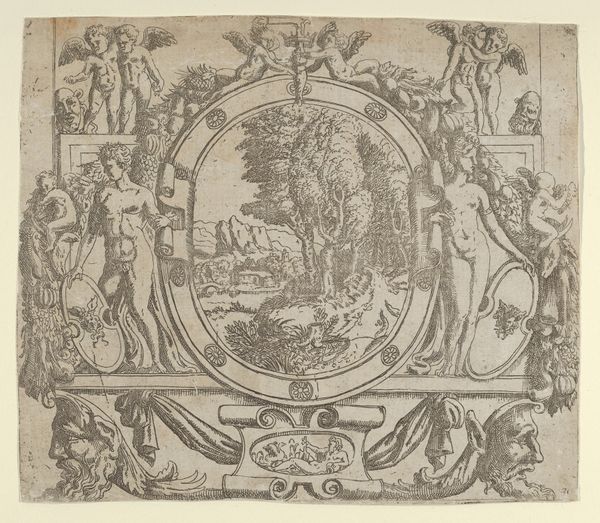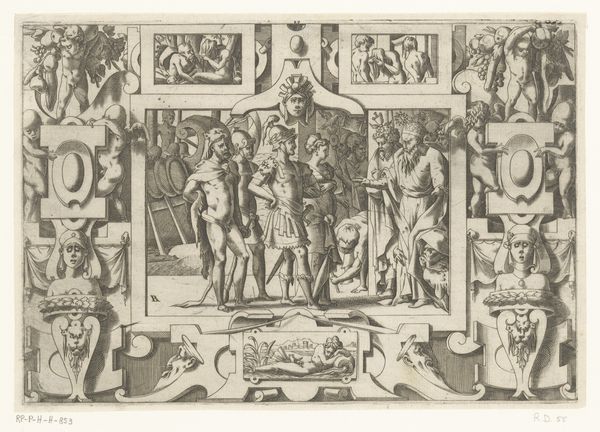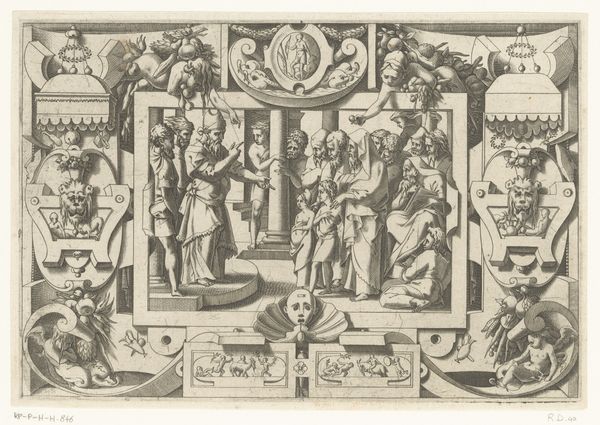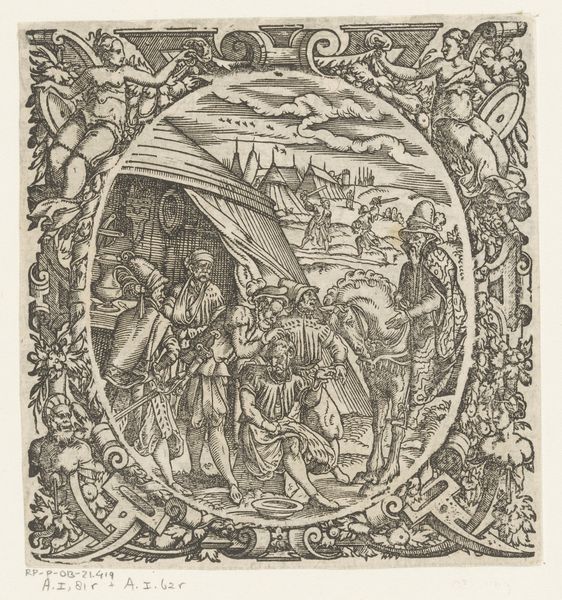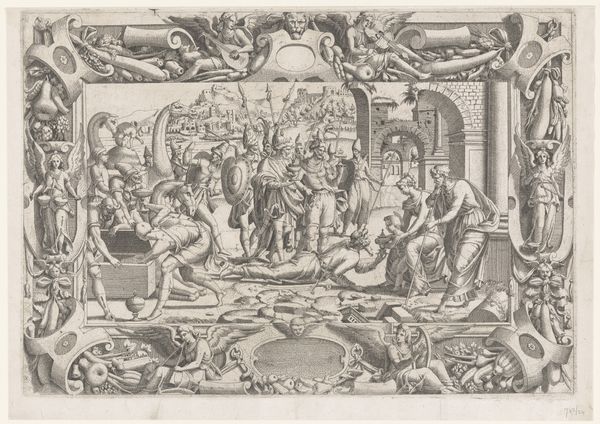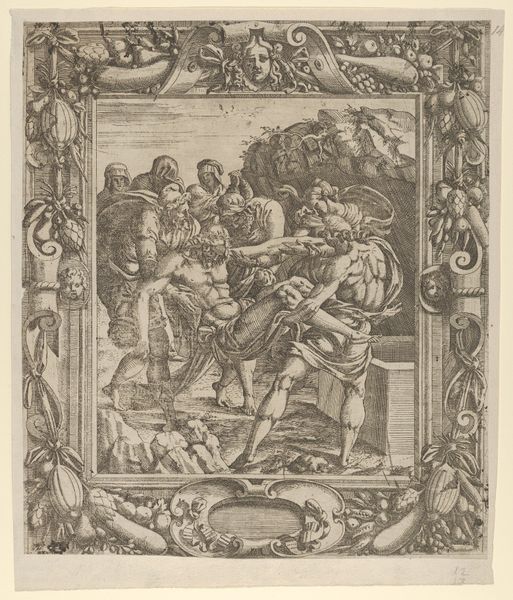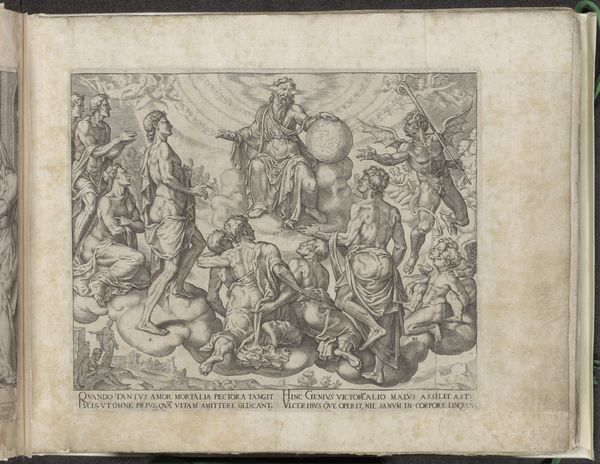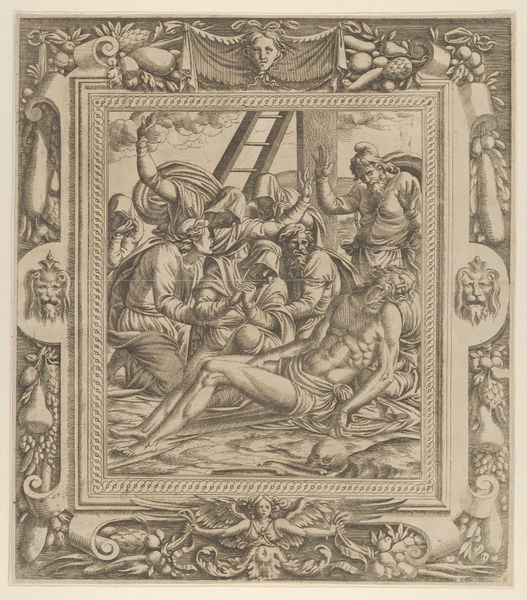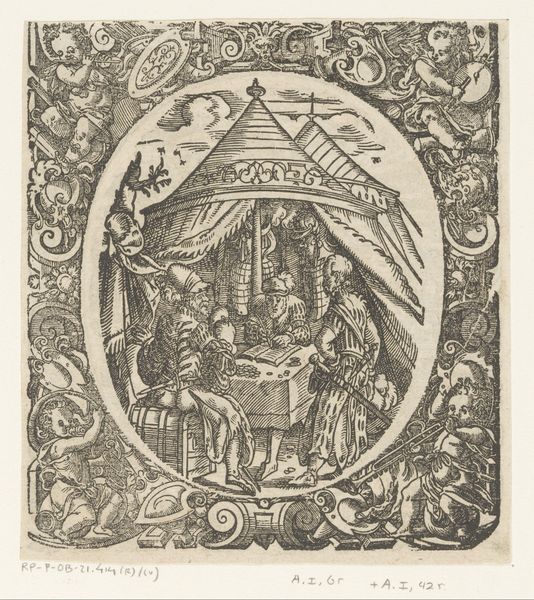
print, woodcut
#
medieval
#
narrative-art
#
pen drawing
# print
#
figuration
#
woodcut
Dimensions: 4 7/8 x 6 1/2 in. (12.38 x 16.51 cm) (sheet)
Copyright: Public Domain
Editor: Here we have Virgil Solis’s “New Testament Scene,” a woodcut print from around the 16th century. The dense composition and intricate details make it feel quite overwhelming at first glance. How do you interpret this work, especially considering its historical context? Curator: The density, as you note, is crucial. Consider the era - the Reformation was challenging religious authority and driving societal upheaval. This print, made using the repeatable technology of the woodcut, circulated widely. So, how might this particular New Testament scene, saturated with figures and details, engage in that moment of religious and social re-evaluation? Do the figures feel unified? Or are there perhaps visual cues hinting at tension or specific ideological divides? Editor: I notice there’s a mix of reactions from the crowd. Some seem curious, others skeptical or even hostile. Is it possible the artist is subtly critiquing established religious narratives or exploring societal responses to new religious ideas? Curator: Exactly. Think about whose stories are centered and whose are marginalized in typical depictions. Does this print challenge or reinforce those power dynamics? Consider the expressions, gestures, even the clothing – what might those details tell us about the social hierarchy and potential contestations of power embedded in this scene? Where does your eye go, and who holds your attention within the image? Editor: I find myself drawn to the figures who seem to be questioning or resisting, their body language suggests they don't necessarily accept what's happening without critical thought. It does make you wonder if Solis was inviting viewers to engage with the scripture in a more critical, questioning way, challenging established dogma. Curator: Precisely. Art is never neutral; it actively shapes our understanding of history, identity, and belief. This piece prompts us to question whose version of the “New Testament” is being presented, and for what purpose. Editor: It really reframes how I look at religious art of this period. It’s not just illustration, but a complex conversation about power, belief, and social change.
Comments
No comments
Be the first to comment and join the conversation on the ultimate creative platform.
